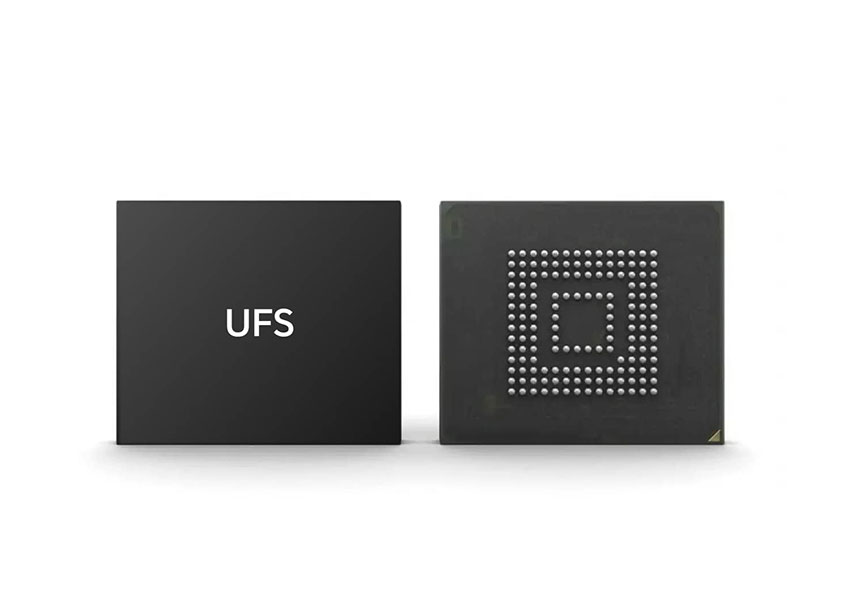TOP

我的荣耀 开启荣耀之旅
To log in to your account, you must first agree to the HONOR PLATFORM TERMS OF USE and HONOR Platform Privacy Statement . If you do not agree, you may only browse the site as a guest.
*You can unsubscribe at any time, Please see our Privacy Statement for details.

What Is UFS Storage: Definition, Function & Benefits
Universal Flash Storage (UFS) has emerged as a game-changing technology in the constantly developing field of digital storage, radically altering the ways in which data is stored and accessed. But what is UFS storage exactly, and why is it becoming a preferred choice for the latest gadgets? This guide dives into the intricacies of UFS storage, explaining its mechanism and highlighting the numerous advantages it offers over traditional storage solutions. Read on to learn everything about this innovative storage technology!
A Brief Explain to UFS Storage
Universal Flash Storage (UFS) is a cutting-edge, non-volatile flash storage technology designed to provide high-performance and reliable data storage in electronic devices. Unlike its predecessor, embedded MultiMediaCard (eMMC), UFS brings a new level of efficiency and speed to the storage landscape.
One of the key features of UFS storage is its use of a full-duplex serial interface. This means that data can be read and written simultaneously, significantly reducing data transfer times and enhancing overall device performance. Additionally, UFS incorporates SCSI (Small Computer System Interface) architectural model and command protocols, which enable more efficient data processing and management compared to its predecessors.
UFS storage is not just about speed; it's also designed with efficiency in mind. It employs a layered architecture that separates the command path, data path, and task management, allowing for improved power management and system responsiveness. This architecture ensures that devices using UFS storage can offer faster boot times, quicker application launches, and smoother multitasking capabilities.
How Does UFS Storage Work?
To fully appreciate the innovation behind Universal Flash Storage (UFS), it's essential to understand its full-duplex interface, command queueing, and layered architecture. Here's a closer look at the inner workings of UFS storage:
Full-Duplex Interface
The full-duplex interface, a standout feature of UFS, enables simultaneous read and write operations. This is a significant step up from the half-duplex interfaces used in previous technologies, where data could only move in one direction at a time. By allowing for bidirectional data transfer between the host device (such as a smartphone or tablet) and the UFS storage, UFS significantly reduces latency and boosts overall data throughput.
Command Queueing
Unlike older storage technologies that process commands sequentially, UFS can handle multiple commands at once, thanks to its support for SCSI (Small Computer System Interface) standards. This command queueing capability allows for more efficient data processing, as the storage device can prioritize and manage tasks more effectively.
Layered Architecture
The architecture of UFS is ingeniously structured into three major layers, each playing a crucial role in the system's functionality and performance.
● UFS Command Set Layer (UCS): Positioned at the top of the architecture, the UCS serves as the primary interface to software applications. The UCS's adoption of SCSI allows UFS to leverage a proven and efficient command protocol, enabling robust data management and high-level command processing capabilities that are essential for fast and reliable storage.
● UFS Transport Protocol Layer (UTP): The UTP acts as the mediator between the command set and the interconnect layers, responsible for the critical task of encapsulating the SCSI commands into the appropriate frame structure.
● UFS Interconnect Layer (UIC): The UIC is the foundation of the UFS architecture, consisting of a sophisticated blend of digital and analogue intellectual property (IP). This layer is built upon the UniPro protocol and M-PHY physical layer, which together facilitate the high-speed, efficient, and reliable transfer of data between the storage device and the host.
Advantages of UFS Storage
UFS brings a host of advantages over traditional storage solutions, such as eMMC and SSDs, making it the preferred choice for cutting-edge electronic devices. Let's delve into the key benefits it offers:
High-Speed Performance
UFS storage is renowned for its high-speed performance capabilities. The full-duplex interface and advanced command queueing allow for simultaneous data transfer operations, significantly boosting read and write speeds. Take the HONOR 90 smartphone as an example; it is equipped with UFS 3.1 Flash, ensuring seamless multitasking, faster app loading, and improved overall system responsiveness.
Low Latency
UFS storage is designed with low latency in mind, allowing for swift data access and processing. This is crucial for applications requiring real-time data processing, such as high-end gaming, augmented reality (AR), and professional photography. By minimizing delays in data retrieval and storage, UFS enables devices to perform more efficiently, enhancing the overall performance of applications that rely on quick data access.
Energy Efficiency
Despite its high-speed capabilities, UFS storage is remarkably energy efficient. It employs advanced power management techniques, including the use of low-power states during periods of inactivity. This efficiency extends the battery life of mobile devices, making UFS an ideal choice for smartphones, tablets, and other portable electronics where power consumption is a critical consideration.
Enhanced Multimedia Experience
UFS storage plays a pivotal role in enhancing the multimedia experience on electronic devices. Its high-speed performance ensures smooth recording and playback of high-resolution videos, quick loading of multimedia-rich games and apps, and seamless content streaming. Overall, UFS significantly accelerates data access for multimedia files, providing a responsive and immersive user experience.
Conclusion
As we've explored, UFS storage represents a significant leap forward in the realm of digital data storage. By offering high-speed performance, low latency, energy efficiency, and an enhanced multimedia experience, UFS sets a new standard for what you can expect from your electronic devices. As technology continues to evolve, the adoption of UFS storage is poised to become more widespread, marking a new era in the efficiency and performance of digital devices.
FAQ
Which storage is better: eMMC or UFS?
UFS is generally considered superior to eMMC in terms of speed and performance. UFS offers faster read/write speeds, which translates to quicker file transfers, faster app loading times, and better performance in data-intensive applications. It can also significantly enhance multitasking capabilities and the overall responsiveness of a device.
How do I check my UFS storage?
You can check your device's storage specifications in the settings menu. Look for "Storage" or "About Phone" options, where you'll find details about the type of storage your device uses, including whether it's UFS. If your device's settings don't provide detailed information about the storage type, you can search for your device's specifications on the manufacturer's website or tech review sites to determine if it uses UFS storage.
What is the difference between UFS 3.1 and UFS 2.0?
UFS 3.1, introduced in 2020, significantly outperforms UFS 2.0, launched in 2013, in terms of speed and efficiency. With UFS 3.1, sequential read speeds reach up to 2100 Mbps, and sequential write speeds soar to 1200 Mbps for the 512 GB variant, marking a substantial improvement over UFS 2.0's maximum sequential read and write speeds of 850 Mbps and 260 Mbps, respectively, for its 256 GB version.
Are there any special maintenance tips for UFS storage in mobile devices?
While UFS storage is generally robust, it's advisable to keep your device's software updated and avoid overloading storage capacity. Regularly backing up important data is also a good practice to ensure data integrity and security.
Source: HONOR Club

Subscribe For Updates - Special Offers And More.
By providing your email address, you consent to receive the latest offers and information on Honor products, events and services through email or advertisement on third-party platforms. You can unsubscribe anytime according to Chapter 5 of HONOR Platform Privacy Statement.
Consumer hotline
80004444408 Monday to Sunday,9:00am-9:00pm
ae.support@honor.com
Copyright © HONOR 2017-2025.All rights reserved.
We use cookies and similar technologies to make our website work efficiently, as well as to analyze our website traffic and for advertising purposes.
By clicking on "Accept all cookies" you allow the storage of cookies on your device. For more information, take a look at our Cookie Policy.
Functional cookies are used to improve functionality and personalization, such as when playing videos or during live chats.
Analytical cookies provide information on how this site is used. This improves the user experience. The data collected is aggregated and made anonymous.
Advertising cookies provide information about user interactions with HONOR content. This helps us better understand the effectiveness of the content of our emails and our website.






















































